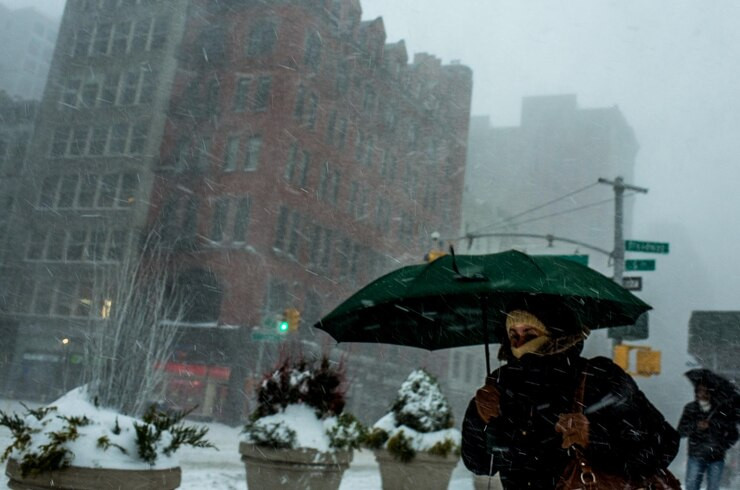Ontario Battles Severe Ice Storm

Ice storm leaves thousands without power in Ontario
Urgent: Ontario Ice Storm Leaves 390,000 Without Power
On This Page You Will Find:
- The current impact of the ice storm on Ontario residents
- How local authorities and utility companies are responding
- Safety recommendations for affected communities
- The broader weather outlook and future warnings
Summary:
Ontario is grappling with a severe ice storm that has left over 390,000 residents without power. As trees and power lines succumb to the weight of ice, Hydro One and local authorities are working tirelessly to restore services. The storm has prompted several municipalities to declare states of emergency, urging residents to stay off icy roads and avoid downed power lines. While efforts are underway to manage the crisis, the storm continues to move east, threatening more regions. This article outlines the impact, response efforts, safety tips, and future weather forecasts.
🔑 Key Takeaways:
- Over 390,000 Ontario residents are without power after a severe ice storm Hydro One.
- Municipalities like Peterborough have declared states of emergency Environment and Climate Change Canada.
- Hydro One and volunteer teams are working to restore power and ensure public safety Hydro One.
- Freezing rain warnings extend to parts of Quebec, New Brunswick, and Nova Scotia Environment and Climate Change Canada.
- Residents are advised to avoid unnecessary travel and report downed power lines immediately Hydro One.
The Bigger Picture
Here's what most people miss: The Ontario ice storm isn’t just a weather event; it's a wake-up call about our infrastructure's vulnerability in the face of climate change and an over-reliance on centralized power systems. While 390,000 residents grapple with darkness, a parallel trend emerges—global shifts toward microgrids and renewable energy solutions. Communities worldwide, from California’s solar-powered neighborhoods to Germany’s wind farms, are investing in decentralized, resilient energy architectures.
Surprisingly, what’s overlooked is this storm’s power to accelerate Ontario’s energy transformation. Imagine the traditional power grid as a single thread that, once snapped, leaves thousands stranded. A microgrid, by contrast, functions like a web—if one strand breaks, others maintain the structure.
Future prediction: Expect a surge in renewable energy investments and policy shifts toward energy decentralization, with Ontario potentially becoming a North American leader in this transition.
As the storm clears, the path forward becomes clear: embracing innovation to build a more resilient, self-sustaining energy landscape. This isn’t just about weathering the storm; it’s about redesigning how we power our lives.
The Human Impact of Ontario's Ice Storm
Imagine waking up to a world encased in ice. Streets are slippery, power is out, and your morning routine is thrown into chaos. This is the reality for more than 390,000 residents across Ontario, who find themselves without electricity after a powerful ice storm swept through the region over the weekend Hydro One. For many, the storm's aftermath is a reminder of nature's unpredictability and the resilience required in its wake.
Impact and Response
As freezing rain battered central and eastern Ontario, it left a trail of destruction. The hardest-hit areas include Barrie, Orillia, and Peterborough, where ice accumulations reached up to 25 millimeters Environment and Climate Change Canada. Trees, heavy with ice, snapped and fell, damaging infrastructure and causing widespread power outages Hydro One.
Kristina Kretchman, a meteorologist at Environment and Climate Change Canada, described the storm's impact: "There have been many reports of trees down, branches down, unfortunately, some of them hitting infrastructure, such as houses or power poles" Environment and Climate Change Canada. In response, Hydro One crews are working round the clock to assess damage and restore power. "We're experiencing outages primarily for tree limbs and branches being weighed down due to the accumulation of freezing rain," a Hydro One spokesperson explained Hydro One.
States of Emergency Declared
The severity of the storm has led several municipalities to declare states of emergency. The City of Peterborough was one of the first to take action, opening reception centers for affected residents Environment and Climate Change Canada. Similarly, the Township of Oro-Medonte closed public roads due to downed trees and power lines Environment and Climate Change Canada.
Premier Doug Ford emphasized the government's commitment to aiding affected communities: "The province is actively working with communities to keep people safe and restore power as quickly as possible" Hydro One.
Safety Recommendations
Safety remains a top priority as residents navigate the icy aftermath. Hydro One advises maintaining a safe distance from fallen power lines and reports any sightings to both 911 and Hydro One directly Hydro One. With the risk of flooding from melted ice, homeowners are also urged to monitor water levels near electrical equipment. "Do not enter any flooded areas until power is disconnected," Hydro One cautioned Hydro One.
Weather Conditions and Future Outlook
The storm, which originated from a low-pressure system in Texas, is not over yet. Freezing rain warnings remain in place for a broad swath of central and eastern Ontario, with the storm expected to progress northeast Environment and Climate Change Canada. As the system moves, additional regions, including Quebec and parts of the Maritimes, are bracing for similar conditions Environment and Climate Change Canada.
Hydro One's Tiziana Baccega Rosa warned that more outages are likely as ice continues to build on equipment. "This has been a very challenging weather event, with multiple systems in it, which is part of the challenge," she noted Hydro One.
Conclusion
As Ontario continues to recover from one of its most severe ice storms in recent memory, the focus remains on restoring power and ensuring public safety. While the storm's full impact is still unfolding, the combined efforts of Hydro One, local governments, and volunteer teams underscore a collective resilience in the face of adversity.
 Author: Azadeh Haidari-Garmash, RCIC
Author: Azadeh Haidari-Garmash, RCIC
